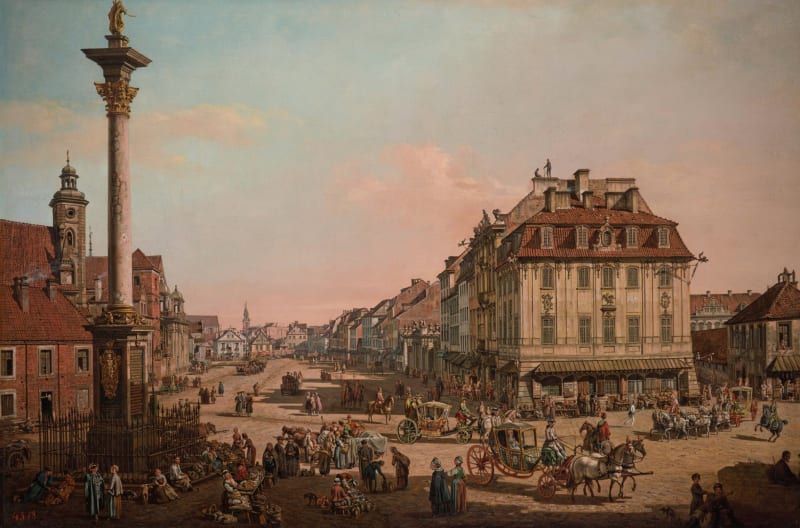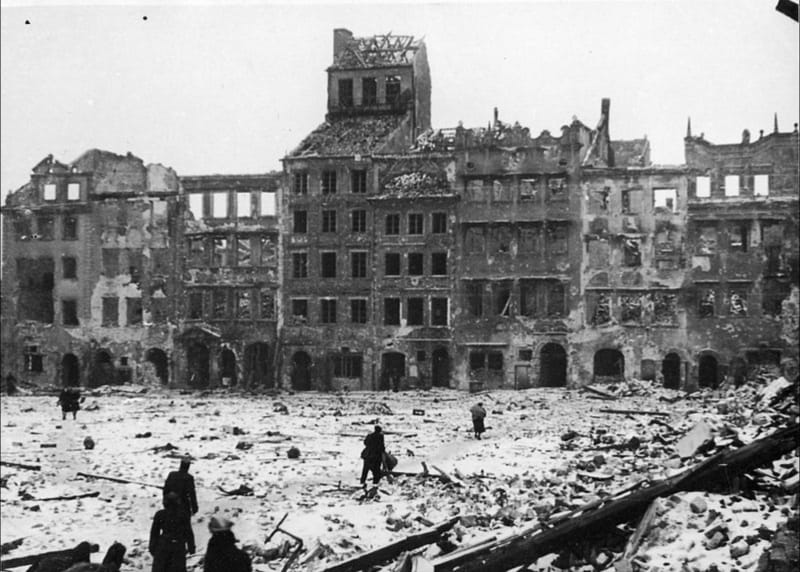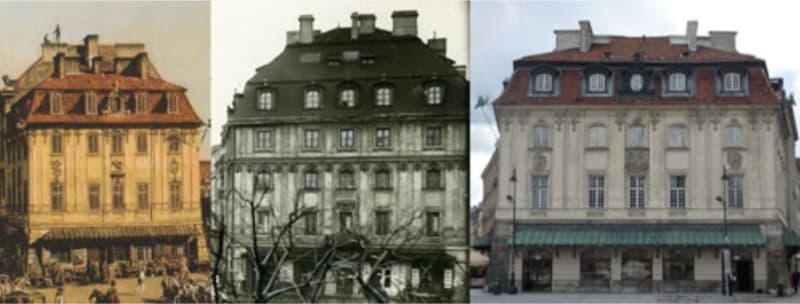Bellotto and bomb damage

Bernardo Bellotto (or Belotto) was the nephew and pupil of Antonio Canaletto. Bellotto painted many of the exact same subjects as Canaletto, and together they produced finished drawings and engravings whose authorship is not always easy to assign.
Canaletto’s contemporary, the artist and art historian Antonio Zanetti, wrote that “Canal taught the proper use of the camera obscura”. In the Correr Museum in Venice there is a camera obscura in the form of small closed box, labelled with the name ‘A. Canal’. This has misled Canaletto scholars. The type of the camera used by the artist was more likely to have been a larger cubicle or booth – perhaps resembling a closed sedan chair – that he would have sat and worked inside. There is a notebook in the Accademia in Venice containing some 140 pages of what are clearly camera drawings by Canaletto. He and Bellotto worked these sketches up into finished pictures.
The paintings of both artists give a first impression of being accurate, ‘proto-photographic’ records of the architecture of Venice. Art historians have argued that this idea is mistaken, and that Canaletto departs from real appearances in many respects. The truth is somewhere between these positions. Much of the city is indeed represented ‘photographically’; but certain details are systematically altered. For instance, Canaletto tends to make churches larger and campaniles taller than they would appear in camera images.

The first person to whom Canaletto must have taught the ‘proper use of the camera obscura’ was his pupil and assistant. In 1747 Bellotto moved to northern Europe – where he styled himself ‘Canaletto’ – and became a court painter in Dresden, Munich and finally Warsaw. He concentrated on architectural views of these cities. He made the skies darker than in the Venetian pictures, and his work came to have affinities with Dutch painting. Bellotto became yet more meticulous in his depiction of the detail of buildings. For many pictures he took viewpoints from the windows of upper floor rooms, which he would have blacked out to turn them into camera obscuras.

The City of Warsaw was pulverised to rubble during the course of the Second World War, many historic buildings being destroyed deliberately by the Nazis in an effort to eradicate Polish culture. In 1945 the new communist government decided to restore the centre, not as it had been in 1939, but during the ‘golden age’ of the late 18th century. And how could they know exactly what it looked like then? From Bellotto’s paintings. The art historian Philip McCouat has written an account of this project. Today, reproductions of the paintings in question are on display in the streets rebuilt from Bellotto’s visual testimony. The most beautiful of the reconstructed monuments is the Church of the Sisters of the Holy Sacrament in the New Town.

Bellotto was certainly an extremely conscientious topographer. But he was not always completely reliable. McCouat points to Bellotto’s rendering of John’s House on Castle Square (left, below). This was rebuilt from the painting in 2009 (right). However a pre-War photograph (centre) shows that Bellotto, for whatever reason, perhaps uncharacteristic carelessness, left out one of the floors.

Philip McCouat, ‘Bernardo Bellotto and the Reconstruction of Warsaw’, Journal of Art in Society ,2015* www.artinsociety.com
Hellmuth Allwill Fritzsche, Bernardo Belotto genamt Canaletto, August Hopfer, Leipzig 1936